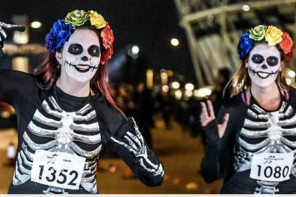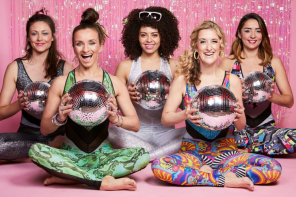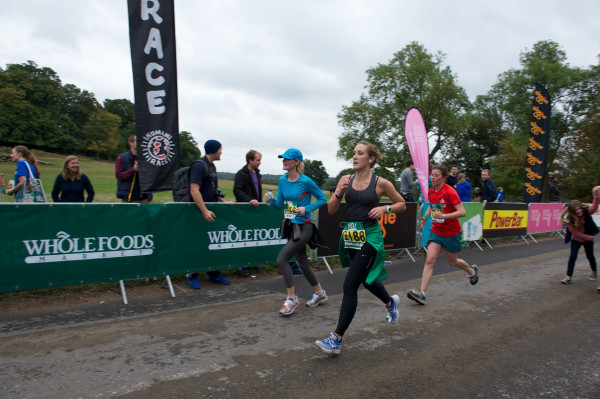Ashtanga, hatha, cunnilingu… what do they all mean and which style is best for you? Find out with our basic guide to yoga – complete with some new classes to try.
We must admit, it’s only in the last year or so that we’ve really got into yoga. Until recently, we kind of thought it was for those girls in the gym who wear full makeup, don’t like to sweat and enjoy standing around pretending to be trees. How very, very wrong we were!
Yes yoga can be gentle and chilled and allow you to have a bit of ‘me time’ but it can also be ass-kickingly, sweat-drenchingly hard – that’s why athletes including Andy Murray and Serena Williams use it to improve their performance and actresses like Jennifer Aniston use it to look so damn hot.
All yoga will improve your flexibility, tone your core and chill you the flip out but there are many other benefits, depending on which style you choose. So we asked Lisa Campbell, Director of the fabulous Yotopia studio in Central London (yotopia.co.uk) to help us create an – in no way exhaustive – guide to the more common types out there, and a few classes that are a little bit different.
Hatha Yoga – the gentle one
What it is? A gentle style of yoga, hatha is one of the original styles and most other forms are based on it. It’s all about balancing opposites – Ha means sun and Tha moon – so expect a lot of work on promoting balance in the body and your holistic wellbeing. Hatha stems from tantra, but when tranta started getting all rude and that, hatha branched out on its own.
What to expect: A good all-round balanced class including posture, breath and energy work. Postures are held for long periods of time to help with stamina and strength.
Great for: Stress and tension relief, anxiety and depression, addressing alignment and imbalance.
Vinyasa Flow – the variable one
What is it? Vinyasa means a sequence of poses joined together in a flowing way.
What to expect: This very much depends on the teacher as vinyasa is a loose description and there are many ways that a teacher can form a sequence of postures. It’s worth shopping around to find a teacher whose classes you enjoy. Check class descriptions for ability levels, though, as more advanced classes can cover quite challenging postures.
Great for: Improving coordination, strength, flexibility, grace and relaxation.
Ashtanga Yoga – the powerful one
What is it? Great for those who are fit and flexible, ashtanga is often billed as ‘Power Yoga’. It was originally designed for teenagers in a hot climate (hmmm).
What to expect: A dynamic sequence of flowing postures (or asanas in yoga speak). There are three sequences to work through, although most classes will focus on the first series, meaning you learn from repetition.
Benefits: Great cardio workout, good for weight loss, strengthening, toning and flexibility.
Jivamukti – the deep and meaningful one
What is it? Energetic and often set to music, jivamukti was founded in the early 80s by a dancer/musician and her husband. There can be a bit of chanting and yogic scripture involved so if you’re not into the spiritual/hippy side of yoga, perhaps not for you.
What to expect: Chanting, yogic scripture and philosophy, and a dynamic sequence of postures. Teachers are well trained and are particularly good at helping make sure you’ve got your alignment right.
Benefits: Develops strength and stamina, increases self-awareness and can be grounding and calming.
Iyengar – the one with props
What is it? Iyengar uses lots of props, such as wooden blocks, straps and harnesses – not in that way! It was created by an ill man called Iyengar (funny that) who used yoga to bring himself back to health. The props mean the postures are accessible to all, so it’s great if you have an injury.
What to expect: Lots of focus on correct posture and alignment. You’ll use props to complete postures you may not otherwise be able to, meaning it’s suitable for all abilities.
Benefits: Great for correcting posture and alignment, general health and healing.
Bikram – the hot one
It’s getting hot in here, so take off all your… well don’t, but wear as little as possible; bikram is practiced in a room that’s heated to 105 degrees. The heat recreates the environment yoga is practiced in in India, improves flexibility and aids detoxification.
What to expect in a class: Classes last for 90 minutes, and run through a series of 26 postures. The same postures are used in every class so you can see improvement each time. Bikram is a good cardio workout – it’s the type that Andy Murray practises and he won an Olympic gold!
Benefits: Detox, flexibility, strength, cardiovascular, weight loss.
Now for something a bit different
Anti-Gravity Yoga – you, like, totally fly! Created by gymnasts, anti-gravity is done in a harness called an AntiGravity Hammock, which is a bit like a trapezee. Dance, pilates and calisthenics moves are incorporated. antigravityyoga.co.uk
Funk the Buddha – an urban fusion of yoga, live music and dance DJs. Yeah! funkthebuddha.com
Hot Yoga with weights – build your upper body strength and get well toned by using weights as you practise. yotopia.co.uk
Broga – this one’s for the boys (they find it harder to touch their toes) but is open to girls too. Run by Matt Miller of Channel 4’s Fat Fighters fame, it promises to have you sweating buckets and feeling challenged in ways you didn’t know were possible. www.broga.uk.com






This is just what I was looking for! I was looking through the maze of yoga classes yesterday and wondered what it all meant. Thank you so much.
I love the hot yogalates classes at Yotopia!